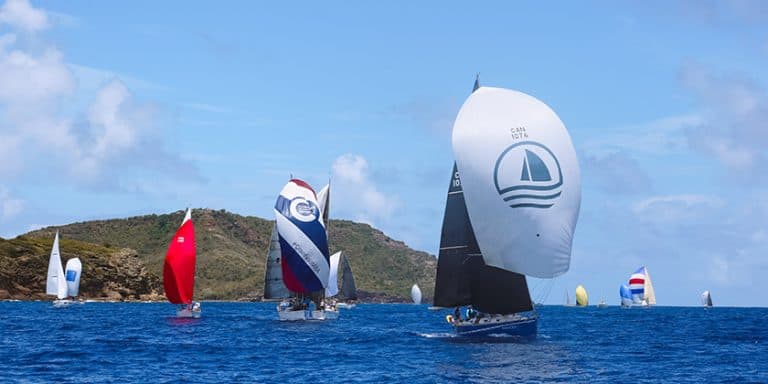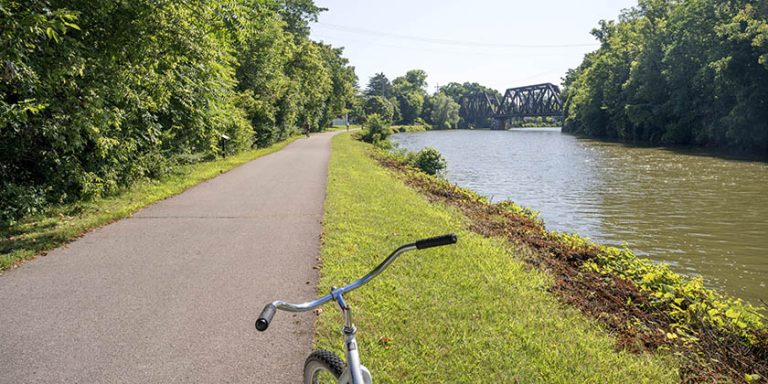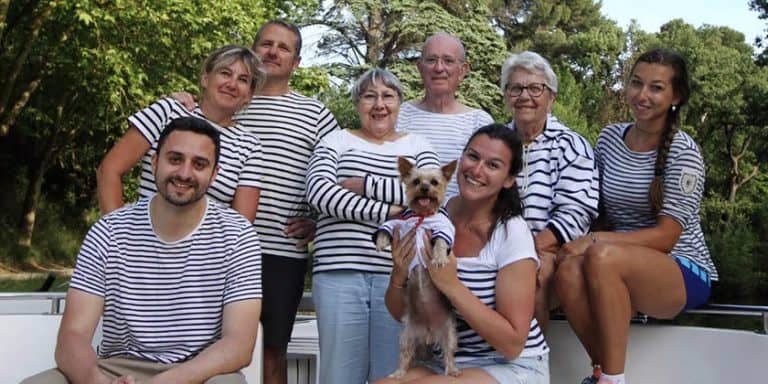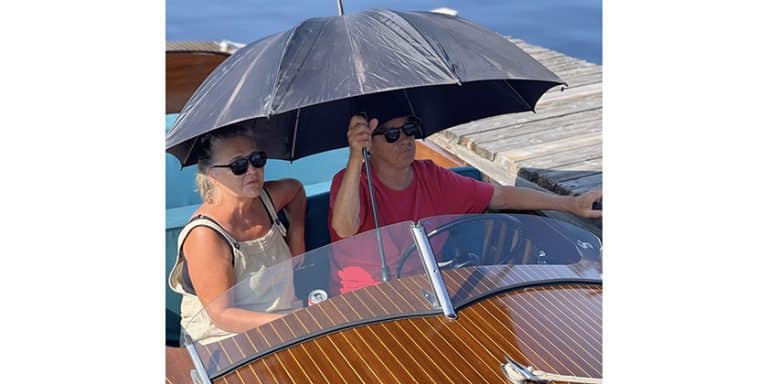Bruce Peninsula, Ontario
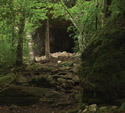
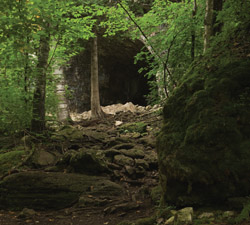 A rugged path strewn with rocks slices through a dense stand of cedar just beyond a red-roofed square wooden lighthouse squatting beside Georgian Bay on the furthest reaches of Ontario’s Bruce Peninsula.
A rugged path strewn with rocks slices through a dense stand of cedar just beyond a red-roofed square wooden lighthouse squatting beside Georgian Bay on the furthest reaches of Ontario’s Bruce Peninsula.
You trudge along this path that meanders through forests boasting five-hundred-year-old trees; you deeply inhale the cedar aroma. Then the forest thins and you emerge onto a plain of stone and sand and shale.
Before you, glittering in the sunlight, reclines a lagoon that wouldn’t be out of place in the South Pacific. But instead of palms you see pine. You see aspen, their leaves shimmering like a ransom of silver coins.
In the foreground a couple of sailboats and three or four powerboats swing gently at anchor. The sailboat masts sway back and forth like a couple dancing late at night – slow, sensuous.
Background is a platoon of towering precipices – West Bluff, Middle Bluff, Boulder Bluff, South Bluff. Five hundred feet overhead their faces are etched and wrinkled like the visages of old men but their ridges are softened by the silhouettes of pines that cling to their heights like mountain goats and dance in synchronicity with the masts so far below.
The view from here could make a marine cry.
You later climb the spiral stairs of the lighthouse; you explore the re-created historic keeper’s home. And you stare out at waters as blue as the sky, Georgian Bay unbroken to the horizon line in the east, Lonely Island and Bear’s Rump Islands blue-gray monoliths to the west.
You’ve uncovered here a cruising ground missed by many, a cruising ground offering some of the best views on Georgian Bay, as you scan waters clear as gin from your vantage point at the top of the Cabot Head lighthouse.
You’ve begun to bond with the Bruce.
When Samuel Champlain first saw these waters sometime around 1615 he dubbed them the Sweetwater Sea. He was downright prophetic: they are a mouth-watering confection for the cruising boater.
And the Bruce is the tastiest morsel of all.
It sprouts north from the base of southwest Ontario like a great branched coral head. Tobermory marks the western while this lighthouse guards the east. From here the Bruce falls away south, past the village of Dyer’s Bay, the port town of Lion’s Head, a huge bay at Melville Sound, past a smattering of islands and the erstwhile rail town of Wiarton, ending in the south at the Bruce’s lone nod to urban life. Owen Sound, once a bustling rail and marine terminus, boasts a wealth of gorgeous Victorian homes, museums, and sufficient shopping to satisfy the most acquisitive first mate.
Sixty miles long, the Bruce marks Georgian Bay’s western boundary. Its great bluffs are the spine of the Niagara escarpment, a landform born five hundred miles to the south, dipping beneath the water at Tobermory, breaking the surface again on Manitoulin Island.
It is a cornucopia of biodiversity, a UNESCO biosphere boasting three hundred bird species, fifty-four kinds of wild orchids, fifty different ferns. And one of southern Ontario’s last great forests.
Some of the best hiking in the province here. But the Bruce is still, first and foremost, a boater’s paradise.
While it’s admittedly a long haul from the south Kincardine and Port Elgin on the west side both offer great overnight options en route with full service marinas. At Kincardine you can visit the historic lighthouse and listen as a bagpiper salutes the sunset (among the world’s best). Tie up at Port Elgin and you might even get to take in some live jazz. Then your next landfall is Tobermory, where most cruisers provision and make for either the Thirty Thousand Islands or the North Channel.
The smart ones stay for a while and explore the Bruce.
Ten minutes after we tie up at Wiarton Marina a couple two docks over invites us aboard for cocktails.
“We couldn’t imagine being anywhere else,” says first mate, Susan Beacock. “So beautiful it makes you want to cry. And the other boaters are something else. Had to put in a new head. Two fellows help us put it in and they won’t take a penny for their help.”
Husband Gary nods. “One time we’re up in Wingfield Basin, by Cabot Head. I drop the hook and go on the radio. ‘Bar’s open’, I say. Ten minutes later we’ve got fifteen people on the boat.”
He grins at me then raises his eyebrows in a question. “Another Bloody Ceasar?”
Next morning, sitting at a picnic table beside the water, sheltered by a sheer cliff three hundred feet up, I discover even more gracious boaters.
They tell me about Melville Sound, one of the most beautiful anchorages this side of the North Channel. Mike Hurley points me to White Cloud Island. “Little Port Elgin is nice,” says Fred Richardson.
A couple of days earlier we’d met Ken Hodge, dockmaster at Lion’s Head Marina, a modern facility sheltered by a stone seawall, guarding the approaches to a brown sugar beach sheltered by maples and oaks. Hodge spread a chart on the counter of the marina office and pointed out hazards to navigation. Surprise Shoal could be tricky, as could Jackson Shoal, but everything was well-marked. “But it’s mostly the weather you have to watch for,” Hodge warned. “Northeast blows can really stir things up.” According to Mike Hurley you don’t really have to worry about the weather. “Stick around if you don’t like it,” he’d quipped from the dock at Wiarton. “It’ll change in ten minutes anyway.”
At the end of our impromptu chart-briefing halfway beneath the North Pole and the equator Hodge got a faraway look in his eyes and scanned the mirrored waters of the bay, gilded by the golden light of the early morning sun. He stopped talking and lifted his gaze to the ridge to our south, Lion’s Head. “Shame we don’t get more transient boaters here,” he said wistfully. “So beautiful here.”
Later on that day we climbed a serpentine tarmac road rising up from the south end of the beach. It is one of the more challenging and most spectacular sections of the Bruce Trail. We trudged along a trail through forests, opening into sun-dappled glades shadowed by fifty-foot rock faces, climbing ever steeper, ever higher, past surreal glacial landforms and clamoring over boulders and tree roots until we reached a forest opening and gazed out over paradise itself.
Three hundred feet straight down we could see rocks fifty feet beneath the surface the water was so clear, we stood at the crest of steep cliffs, we saw great bluffs marching north into infinity. From our vantage-point, high atop Lion’s Head, we watched a lone boat traversing waters the color of the Caribbean, a white “V” following it across Isthmus Bay.
Earlier that day Hodge had bemoaned the lack of visiting boaters. I couldn’t really understand his sentiment. I didn’t at all mind having this place to myself. For boating the Bruce is all about the solitude.
On the morning of my last day here, I stared across these waters from the lee of an octagonal wooden lighthouse guarding the mouth of Tobermory’s Big Tub Harbour. It was hunkered down on a shelf of limestone pockmarked by rain and waves, looking for all the world like a displaced outcropping of coral.
Later on I would mingle with the crowd strolling the docks, crews preparing dive tanks, people lined up to board commercial excursion boats, other cruisers doing breakfast at Crow’s-nest Café or Bootlegger Cove Pub or Shipwreck Lee’s. Later I’d explore the shopping at a place Great Lakes Cruising Club member Ross Davies calls the “best of both worlds,” slipping into the Chart Room with its nautical gifts and an impressive library of boating books, charts and cruising guides. Later on still I would visit the interpretive centre, climbing the wooden tower and surveying, like the Lord of Creation himself, the waters of Georgian Bay, the land that First Nations residents called “the place of tumbling boulders.”
But for now I savored my solitude here at land’s end.
Here I gazed across the water at a great monolith, the ferry they call “Chi – Chimaun” – “Big Canoe”, groaning at her dock lines, listening to her horn echoing through the morning mist, watching as she glided like a dowager queen through the black waters, making for Manitoulin, the world’s biggest freshwater island.
Here at the lighthouse the waves nuzzled the rock, making a sound like an ancient xylophone, setting down a melody heard for half a million years. My heart beat slowly. I deeply inhaled the cedar aroma.
Bubbles rose up from the indigo water and, with a splash, the heads of two scuba divers broke the surface, wetsuits gleaming like seal pelts. One removed his mask and grinned at the other. They turned to me and gave me the thumbs-up. I returned the gesture.
I knew that they had bonded with the Bruce.
For, so too, had I.



